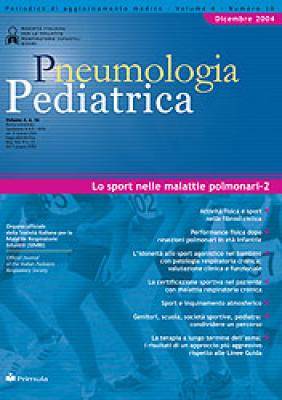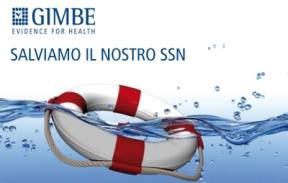Archivio > Vai alle uscite del 2004 > Vai aVolume 4, Numero 16 - Dicembre 2004
- Lo sport nelle malattie polmonari-2
La terapia a lungo termine dell’asma: i risultati di un approccio più aggres-sivo rispetto alle Linee GuidaLong-term therapy for asthma: results of a more intensive treatment than those suggested in official guidelines

Riassunto. Scopo della ricerca: verificare risultati di un trattamento continuativo dell’asma più precoce e più intensivo rispetto a quello suggerito dalle Linee Guida ufficiali. Casistica: 103 pazienti seguiti in media per 6 anni e 7 mesi, e con età mediana all’inizio di 5 anni e 6 mesi. Risultati: con l’inizio della terapia continuativa si riducono il numero di episodi broncostruttivi per paziente/anno (da 5,3 a 2,9; p= 0,000) e i ricoveri per anno (da 0,14 a 0,07; p= 0,04), mentre aumentano i valori del FEF25-75 (dal 69% al 78% rispetto al predetto; p= 0,006). Inoltre, nel periodo di osservazione solo il 6,7% dei pazienti presenta il valore medio di FEV1 inferiore all’80% del predetto e solo il 24% presenta, in tutti i test da sforzo eseguiti, un calo significativo del FEV1 e FEF25-75. La mancanza di una correlazione statisticamente significativa fra uso continuativo del b2-stimolante (espresso in giorni/anno/paziente) da un lato e percentuale di risposte positive al test da sforzo e al broncodilatatore dall’altro sta contro l’ipotesi che i b2-stimolanti usati a lungo termine provochino rispettivamente un aumento dell’iperreattività bronchiale e uno stato di tachifilassi.
Summary. The aim was to verify the results of a long-term treatment for asthma more precocious and more intensive than that suggested by official guidelines. 103 patients were followed for an average period of 6 years and 7 months (median age at the beginning 5 years and 6 months). Long-term therapy determined a reduction in the number of asthma exacerbations (from 5,3 to 2,9 episodes/year/child; p= 0,000) and admissions to hospital (from 0,14 to 0,07/year/child; p= 0,04). At the same time FEF25-75 changed from 69% to 79% of the predicted value (p= 0,006). Moreover during the study only 6,7% of patients had a mean value of FEV1 below 80% of the predicted and only 24% of the patients presented a significant decrease in FEV1 and FEF25-75 after exercise. The long-term use of b2-agonists (day/year/patient) was not significantly correlated either with airway hyper responsiveness to exercise or responsiveness to bronchodilator. These results suggest that long acting b2-agonists are not responsible for increased airway inflammation and tachiphylaxis.
chiudi






